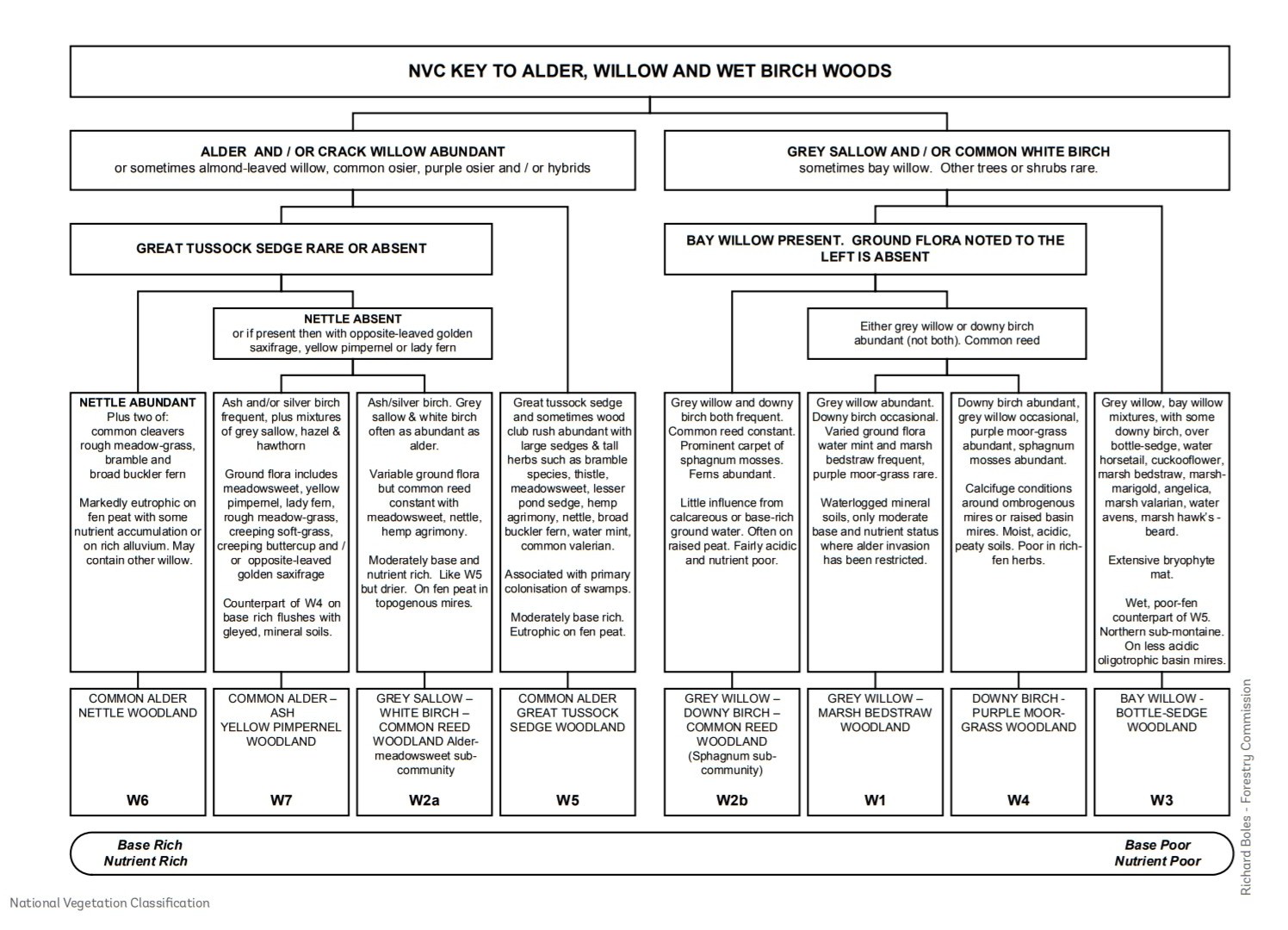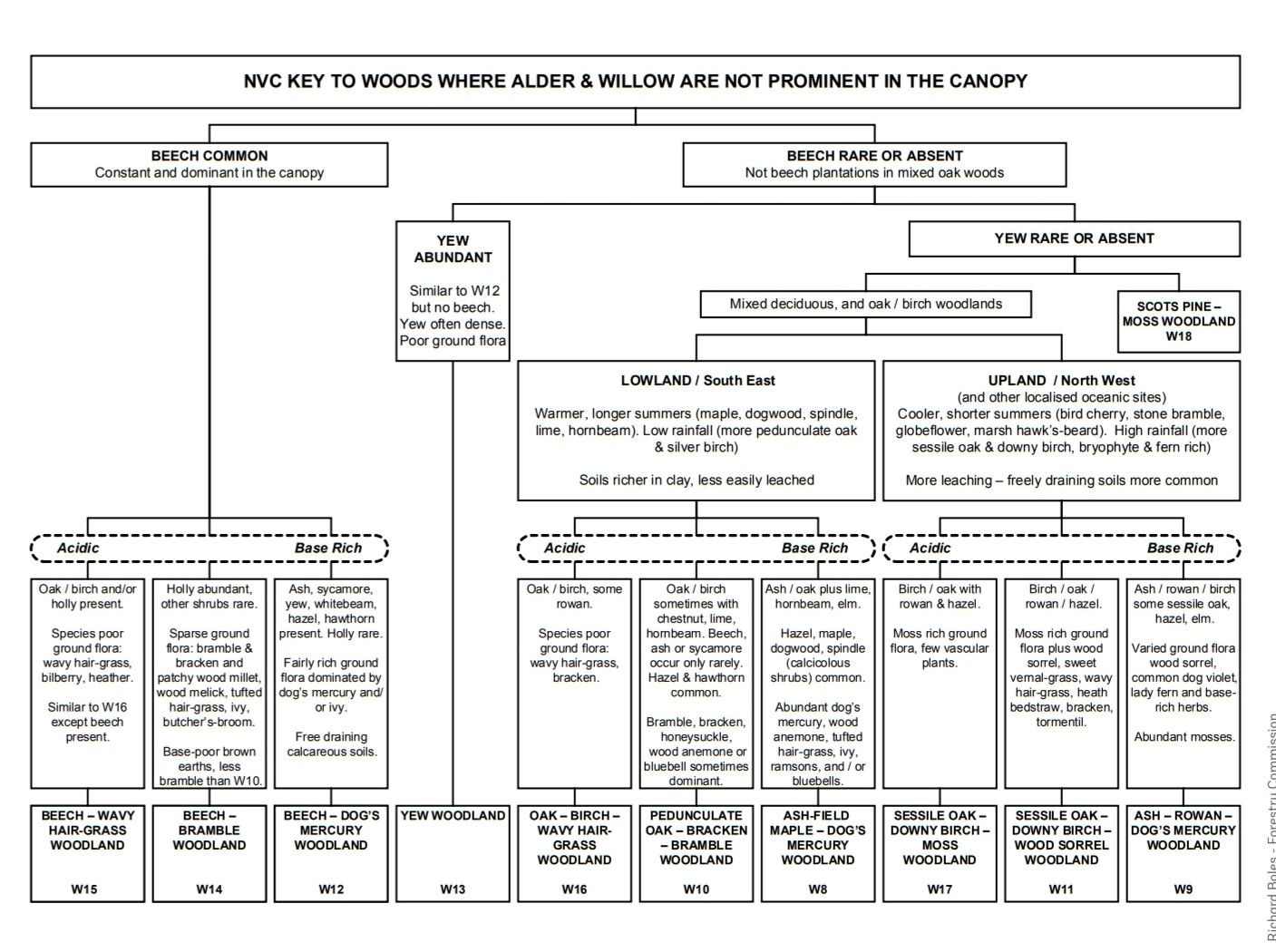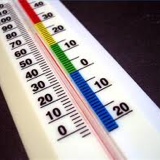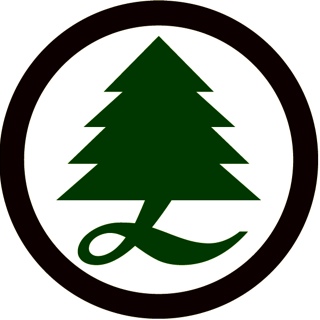Information
-
Estate
-
Wood name
-
Compartment
-
Conducted on
-
Prepared by
-
Location
Survey
Site Level Information
-
Site Type From GIS and Ancient Woodland Layer
- ASNW
- PAWS
- LEPO
- Other Ancient Wood
-
Site description
-
Area
-
Larger sites may need to be be stratified into relatively homogeneous areas. Add additional strata as required. Sketch strata boundaries onto a map for later reference.
-
STRATA
STRATUM
Strata Level information
-
The site connections to other areas of biodiversity and how the site sits in the wider habitat is important
Fully Surrounded - the area is fully surrounded by other areas key to biodiversity.
Multiple Connections - the area forms a key link between several other areas key to biodiversity.
Connected Through - the site forms a link between two otherwise disconnected areas of biodiversity.
Single Connection - the site is adjacent to another area of biodiversity but does not form a link.
Locally Disconnected - there are other sites important to biodiversity locally but the site is not directly connected to them.
Isolated - there are no other biodiversity sites locally. -
Brief Stratum description
-
Site Connectivity
- Fully Surrounded
- Multiple Connections
- Through Connection
- Single Connection
- Locally Disconnected
- Isolated
-
Classify the stratum
- Already clearfelled
- To be clearfelled
- ASNW
1. Veteran Trees
-
Veteran Trees. In PAWS these are those trees that probably significantly pre-date the crop.
Abundant >25 trees per ha
Frequent >5 trees per ha
Infrequent <5 trees per ha
Rare <1 tree per ha
Absent no trees present on site -
Veteran Trees
-
Threat Status
- Critical (loss within 5 years)
- Threatened (loss within 10 years)
- Secure (for at least 10 years)
-
Nature of Threat (tick all that apply)
- Shading by Planted Crop
- Non-native Invasive Species
- Bracken, Strong Grasses etc
- Deer Browsing
- Regeneration of Conifer Trees
- Other (specify in comments below)
- Windblow in Overstory Crop
-
Comments/suggested actions
-
Photograph
-
Comment
2. Non Veteran Native Trees
-
In PAWS these would be Native trees that probably grew up with the current crop or since it was planted.
Abundant >25 trees per ha
Frequent >5 trees per ha
Infrequent <5 trees per ha
Rare <1 tree per ha
Absent no trees present on site -
Non Veteran Native Trees<br><br>
-
Threat Status
- Critical (loss within 5 years)
- Threatened (loss within 10 years)
- Secure (for at least 10 years)
-
Nature of Threat (tick all that apply)
- Shading by Planted Crop
- Non-native Invasive Species
- Bracken, Strong Grasses etc
- Deer Browsing
- Regeneration of Conifer Trees
- Other (specify in comments below)
- Windblow in Overstory Crop
-
Comments/suggested actions
-
Photograph
3. Existing Regeneration of Native Trees
-
Abundant - regeneration spread widely throughout area
Frequent - patches of regeneration throughout area
Infrequent - occasional scattered patches of regeneration or individual small trees
Rare - occasional regenerating tree
Absent - no regeneration -
Existing Regeneration of Native Trees<br>
-
Threat Status
- Critical (loss within 5 years)
- Threatened (loss within 10 years)
- Secure (for at least 10 years)
-
Nature of Threat (tick all that apply)
- Shading by Planted Crop
- Non-native Invasive Species
- Bracken, Strong Grasses etc
- Deer Browsing
- Regeneration of Conifer Trees
- Other (specify in comments below)
- Windblow in Overstory Crop
-
Comments/suggested actions
-
Photograph
-
Comment
-
If regeneration is absent add reason
Reason
-
Reason for lack of regeneration if absent.
- Shading by Planted Crop
- Non-native Invasive Species
- Bracken, Strong Grasses etc
- Deer Browsing
- Regeneration of Conifer Trees
- Other (specify in comments below)
- Windblow in Overstory Crop
-
Comments/suggested actions
-
Photograph
4. Deadwood
-
Significant standing and fallen deadwood would be larger than 20cm in diameter
Abundant >25 dead trees or significant limbs
Frequent >5 dead trees or significant limbs per ha
Infrequent <5 dead trees or significant limbs per ha
Rare - very occasional limb or dead tree
Absent - no deadwood present -
Deadwood<br>
-
Threat Status
- Critical (loss within 5 years)
- Threatened (loss within 10 years)
- Secure (for at least 10 years)
-
Nature of Threat (tick all that apply)
- Shading by Planted Crop
- Non-native Invasive Species
- Bracken, Strong Grasses etc
- Deer Browsing
- Regeneration of Conifer Trees
- Other (specify in comments below)
- Windblow in Overstory Crop
-
Comments/suggested actions
-
Photograph
-
Comments
5. Vegetation
-
Thinking in particular about native woodland indicator species;
Abundant - good range of expected species and population density
Good - reasonable representation of expected species and present in reasonable populations
Rare - only occasional common species
Absent - there is no evidence of native woodland indicator species anywhere within the area -
Vegetation in stratum
-
Ancient woodland indicator species present
- Bluebell
- Greater stitchwort
- Common Cow-wheat
- Wood sage
- Greater woodrush
- Slender St John's wort
- Yellow pimpernel
- Pignut
- Primrose
- Wood sorrel
- Dogs mercury
- Enchanters nightshade
- Common Figwort
- Sweet Woodruff
- Barren Strawberry
- Wild Strawberry
- Ramsons
- Wood Anemone
- Herb Paris
- Sanicle
- Opposite-leaved golden saxifrage
- Other-add in comments
-
Threat Status
- Critical (loss within 5 years)
- Threatened (loss within 10 years)
- Secure (for at least 10 years)
-
Nature of Threat (tick all that apply)
- Shading by Planted Crop
- Non-native Invasive Species
- Bracken, Strong Grasses etc
- Deer Browsing
- Regeneration of Conifer Trees
- Other (specify in comments below)
- Windblow in Overstory Crop
-
Comments/suggested actions
-
Photograph
-
Comments
6. Rare Species
-
Include both Flora and Fauna. Also consider nesting and breeding sites for rare species.
Key site - known breeding or refuge site for particularly rare or endangered species. Eg white tailed eagle, capercaillie. Include all designated sites here.
Important Site - site with 'second level' protected species. Eg red squirrel, otter, badger
Local interest Site - site with local interest or rarity
Expansion site - site with the potential to allow the expansion of local populations from adjacent areas or potential habitat link.
Absent - no rare species present or in the locality -
Rare Species
-
Threat Status
- Critical (loss within 5 years)
- Threatened (loss within 10 years)
- Secure (for at least 10 years)
-
Nature of Threat (tick all that apply)
- Shading by Planted Crop
- Non-native Invasive Species
- Bracken, Strong Grasses etc
- Deer Browsing
- Regeneration of Conifer Trees
- Other (specify in comments below)
- Windblow in Overstory Crop
-
Comments/suggested actions
-
Photograph
7.Archaeology and Cultural Significance
-
Archaeology and Cultural Significance
- Scheduled Site
- Unscheduled but Important Site
- Local Interest Site
- Agricultural Legacy (dykes, sheep fanks etc) only
- None Present
-
Threat Status
- Critical (loss within 5 years)
- Threatened (loss within 10 years)
- Secure (for at least 10 years)
-
Nature of Threat (tick all that apply)
- Shading by Planted Crop
- Non-native Invasive Species
- Bracken, Strong Grasses etc
- Deer Browsing
- Regeneration of Conifer Trees
- Other (specify in comments below)
- Windblow in Overstory Crop
-
Comments/suggested actions
-
Photograph
8. Amenity, Landscape and Public Access
-
Consider the area in terms of its overall Amenity, Landscape and Public Access Importance.
-
Amenity, Landscape and Public Access Significance
-
Threat Status
- Critical (loss within 5 years)
- Threatened (loss within 10 years)
- Secure (for at least 10 years)
-
Nature of Threat (tick all that apply)
- Shading by Planted Crop
- Non-native Invasive Species
- Bracken, Strong Grasses etc
- Deer Browsing
- Regeneration of Conifer Trees
- Other (specify in comments below)
- Windblow in Overstory Crop
-
Comments/suggested actions
9. Summary of Stratum
-
Suggested Stratum Management (tick all that apply)
- Natural Reserve
- Long Term Retention
- Low Impact Silviculture
- Thinning
- Haloing of Veterans and Larger Native Trees
- Widen Riparian Zones
- Control Invasive Non-natives
- Control Regeneration of Current Crop Trees
- Improve Deer Control
- Deer Fence
- Clearfell at Onset of Windthrow
- Restock with Native Bl or SP
- Restock with Conifer
- Restock with Mixed Con/Bl Species
- Leave for natural regeneration of suitable local seed source
-
Stratum Summary Comments and Information
-
Crop Stage
-
Consider the Site and Crop Stability
-
Site Stability
-
Windblow
1. Veteran Trees
-
Veteran Trees. In PAWS these are those trees that probably significantly pre-date the crop.
Abundant >25 trees per ha
Frequent >5 trees per ha
Infrequent <5 trees per ha
Rare <1 tree per ha
Absent no trees present on site -
Veteran Trees
-
Threat Status
- Critical (loss within 5 years)
- Threatened (loss within 10 years)
- Secure (for at least 10 years)
-
Nature of Threat (tick all that apply)
- Shading by Planted Crop
- Non-native Invasive Species
- Bracken, Strong Grasses etc
- Deer Browsing
- Regeneration of Conifer Trees
- Other (specify in comments below)
- Windblow in Overstory Crop
-
Comments/suggested actions
-
Photograph
-
Comments
2. Non Veteran Native Trees
-
In PAWS these would be Native trees that probably grew up with the current crop or since it was planted.
Abundant >25 trees per ha
Frequent >5 trees per ha
Infrequent <5 trees per ha
Rare <1 tree per ha
Absent no trees present on site -
Non Veteran Native Trees<br><br>
-
Threat Status
- Critical (loss within 5 years)
- Threatened (loss within 10 years)
- Secure (for at least 10 years)
-
Nature of Threat (tick all that apply)
- Shading by Planted Crop
- Non-native Invasive Species
- Bracken, Strong Grasses etc
- Deer Browsing
- Regeneration of Conifer Trees
- Other (specify in comments below)
- Windblow in Overstory Crop
-
Comments/suggested actions
-
Photograph
-
Comment
3. Existing Regeneration of Native Trees
-
Abundant - regeneration spread widely throughout area
Frequent - patches of regeneration throughout area
Infrequent - occasional scattered patches of regeneration or individual small trees
Rare - occasional regenerating tree
Absent - no regeneration -
Existing Regeneration of Native Trees<br>
-
Threat Status
- Critical (loss within 5 years)
- Threatened (loss within 10 years)
- Secure (for at least 10 years)
-
Nature of Threat (tick all that apply)
- Shading by Planted Crop
- Non-native Invasive Species
- Bracken, Strong Grasses etc
- Deer Browsing
- Regeneration of Conifer Trees
- Other (specify in comments below)
- Windblow in Overstory Crop
-
Comments/suggested actions
-
Photograph
-
Comment
-
If regeneration is absent add reason
Reason
-
Reason for lack of regeneration if absent.
- Shading by Planted Crop
- Non-native Invasive Species
- Bracken, Strong Grasses etc
- Deer Browsing
- Regeneration of Conifer Trees
- Other (specify in comments below)
- Windblow in Overstory Crop
-
Comments/suggested actions
-
Photograph
4. Deadwood
-
Significant standing and fallen deadwood would be larger than 20cm in diameter
Abundant >25 dead trees or significant limbs
Frequent >5 dead trees or significant limbs per ha
Infrequent <5 dead trees or significant limbs per ha
Rare - very occasional limb or dead tree
Absent - no deadwood present -
Deadwood<br>
-
Threat Status
- Critical (loss within 5 years)
- Threatened (loss within 10 years)
- Secure (for at least 10 years)
-
Nature of Threat (tick all that apply)
- Shading by Planted Crop
- Non-native Invasive Species
- Bracken, Strong Grasses etc
- Deer Browsing
- Regeneration of Conifer Trees
- Other (specify in comments below)
- Windblow in Overstory Crop
-
Comments/suggested actions
-
Photograph
-
Comment
5. Vegetation
-
Thinking in particular about native woodland indicator species;
Abundant - good range of expected species and population density
Good - reasonable representation of expected species and present in reasonable populations
Rare - only occasional common species
Absent - there is no evidence of native woodland indicator species anywhere within the area -
Vegetation in stratum
-
Ancient woodland indicator species present
- Bluebell
- Greater stitchwort
- Common Cow-wheat
- Wood sage
- Greater woodrush
- Slender St John's wort
- Yellow pimpernel
- Pignut
- Primrose
- Wood sorrel
- Dogs mercury
- Enchanters nightshade
- Common Figwort
- Sweet Woodruff
- Barren Strawberry
- Wild Strawberry
- Ramsons
- Wood Anemone
- Herb Paris
- Sanicle
- Opposite-leaved golden saxifrage
- Other-add in comments
-
Other notable vegetation
-
Threat Status
- Critical (loss within 5 years)
- Threatened (loss within 10 years)
- Secure (for at least 10 years)
-
Nature of Threat (tick all that apply)
- Shading by Planted Crop
- Non-native Invasive Species
- Bracken, Strong Grasses etc
- Deer Browsing
- Regeneration of Conifer Trees
- Other (specify in comments below)
- Windblow in Overstory Crop
-
Comments/suggested actions
-
Photograph
-
Comment
6. Rare Species
-
Include both Flora and Fauna. Also consider nesting and breeding sites for rare species.
Key site - known breeding or refuge site for particularly rare or endangered species. Eg white tailed eagle, capercaillie. Include all designated sites here.
Important Site - site with 'second level' protected species. Eg red squirrel, otter, badger
Local interest Site - site with local interest or rarity
Expansion site - site with the potential to allow the expansion of local populations from adjacent areas or potential habitat link.
Absent - no rare species present or in the locality -
Rare Species
-
Threat Status
- Critical (loss within 5 years)
- Threatened (loss within 10 years)
- Secure (for at least 10 years)
-
Nature of Threat (tick all that apply)
- Shading by Planted Crop
- Non-native Invasive Species
- Bracken, Strong Grasses etc
- Deer Browsing
- Regeneration of Conifer Trees
- Other (specify in comments below)
- Windblow in Overstory Crop
-
Comments/suggested actions
-
Photograph
7.Archaeology and Cultural Significance
-
Archaeology and Cultural Significance
- Scheduled Site
- Unscheduled but Important Site
- Local Interest Site
- Agricultural Legacy (dykes, sheep fanks etc) only
- None Present
-
Threat Status
- Critical (loss within 5 years)
- Threatened (loss within 10 years)
- Secure (for at least 10 years)
-
Nature of Threat (tick all that apply)
- Shading by Planted Crop
- Non-native Invasive Species
- Bracken, Strong Grasses etc
- Deer Browsing
- Regeneration of Conifer Trees
- Other (specify in comments below)
- Windblow in Overstory Crop
-
Comments/suggested actions
-
Photograph
8. Amenity, Landscape and Public Access
-
Consider the area in terms of its overall Amenity, Landscape and Public Access Importance.
-
Amenity, Landscape and Public Access Significance
-
Threat Status
- Critical (loss within 5 years)
- Threatened (loss within 10 years)
- Secure (for at least 10 years)
-
Nature of Threat (tick all that apply)
- Shading by Planted Crop
- Non-native Invasive Species
- Bracken, Strong Grasses etc
- Deer Browsing
- Regeneration of Conifer Trees
- Other (specify in comments below)
- Windblow in Overstory Crop
-
Comments
-
Photograph
-
-
-
NVC Type
- W1- grey willow- marsh bedstraw
- W2a- Grey Sallow, White Birch, common Reed
- W2b- Grey Willow, D.birch, Common Reed
- W3- Bay Willow, Bottle sedge
- W4- D.Birch, Purple Moor-grass
- W5- Common Alder, Great Tussock Sedge
- W6- Common Alder, Nettle
- W7- Common Alder, Ash, Yellow Pimpernel
- W8- Ash, Field Maple, Dogs Mercury
- W9- Ash, Rowan, Dogs Mercury
- W10- Pedunculate Oak, Bracken, Bramble
- W11- Sessile Oak, Downy Birch, Wood Sorrel
- W12- Beech, Dogs Mercury
- W13- Yew woodland
- W14- Beech, Bramble
- W15- Beech, Wavy Hair- grass
- W16- Oak, Birch Wavy Hair-grass
- W17- Sessile Oak, Downy Birch, Moss
- W18- Scots pine, Moss
-
Consider the Site and Crop Stability
-
Site Stability
-
Windblow
1. Veteran Trees
-
Veteran Trees. In PAWS these are those trees that probably significantly pre-date the crop.
Abundant >25 trees per ha
Frequent >5 trees per ha
Infrequent <5 trees per ha
Rare <1 tree per ha
Absent no trees present on site -
Veteran Trees
-
Threat Status
- Critical (loss within 5 years)
- Threatened (loss within 10 years)
- Secure (for at least 10 years)
-
Nature of Threat (tick all that apply)
- Shading by Planted Crop
- Non-native Invasive Species
- Bracken, Strong Grasses etc
- Deer Browsing
- Regeneration of Conifer Trees
- Other (specify in comments below)
- Windblow in Overstory Crop
-
Comments/suggested actions
-
Photograph
-
Comment
2. Non Veteran Native Trees
-
In PAWS these would be Native trees that probably grew up with the current crop or since it was planted.
Abundant >25 trees per ha
Frequent >5 trees per ha
Infrequent <5 trees per ha
Rare <1 tree per ha
Absent no trees present on site -
Non Veteran Native Trees<br><br>
-
Threat Status
- Critical (loss within 5 years)
- Threatened (loss within 10 years)
- Secure (for at least 10 years)
-
Nature of Threat (tick all that apply)
- Shading by Planted Crop
- Non-native Invasive Species
- Bracken, Strong Grasses etc
- Deer Browsing
- Regeneration of Conifer Trees
- Other (specify in comments below)
- Windblow in Overstory Crop
-
Comments/suggested actions
-
Photograph
3. Existing Regeneration of Native Trees
-
Abundant - regeneration spread widely throughout area
Frequent - patches of regeneration throughout area
Infrequent - occasional scattered patches of regeneration or individual small trees
Rare - occasional regenerating tree
Absent - no regeneration -
Existing Regeneration of Native Trees<br>
-
Threat Status
- Critical (loss within 5 years)
- Threatened (loss within 10 years)
- Secure (for at least 10 years)
-
Nature of Threat (tick all that apply)
- Shading by Planted Crop
- Non-native Invasive Species
- Bracken, Strong Grasses etc
- Deer Browsing
- Regeneration of Conifer Trees
- Other (specify in comments below)
- Windblow in Overstory Crop
-
Comments/suggested actions
-
Photograph
-
Comment
-
If regeneration is absent add reason
Reason
-
Reason for lack of regeneration if absent.
- Shading by Planted Crop
- Non-native Invasive Species
- Bracken, Strong Grasses etc
- Deer Browsing
- Regeneration of Conifer Trees
- Other (specify in comments below)
- Windblow in Overstory Crop
-
Comments
-
Photograph
4. Deadwood
-
Significant standing and fallen deadwood would be larger than 20cm in diameter
Abundant >25 dead trees or significant limbs
Frequent >5 dead trees or significant limbs per ha
Infrequent <5 dead trees or significant limbs per ha
Rare - very occasional limb or dead tree
Absent - no deadwood present -
Deadwood<br>
-
Threat Status
- Critical (loss within 5 years)
- Threatened (loss within 10 years)
- Secure (for at least 10 years)
-
Nature of Threat (tick all that apply)
- Shading by Planted Crop
- Non-native Invasive Species
- Bracken, Strong Grasses etc
- Deer Browsing
- Regeneration of Conifer Trees
- Other (specify in comments below)
- Windblow in Overstory Crop
-
Comments/suggested actions
-
Photograph
-
Comment
5. Vegetation
-
Thinking in particular about native woodland indicator species;
Abundant - good range of expected species and population density
Good - reasonable representation of expected species and present in reasonable populations
Rare - only occasional common species
Absent - there is no evidence of native woodland indicator species anywhere within the area -
Vegetation in stratum
-
Ancient woodland indicator species present
- Bluebell
- Greater stitchwort
- Common Cow-wheat
- Wood sage
- Greater woodrush
- Slender St John's wort
- Yellow pimpernel
- Pignut
- Primrose
- Wood sorrel
- Dogs mercury
- Enchanters nightshade
- Common Figwort
- Sweet Woodruff
- Barren Strawberry
- Wild Strawberry
- Ramsons
- Wood Anemone
- Herb Paris
- Sanicle
- Opposite-leaved golden saxifrage
- Other-add in comments
-
Other notable vegetation
-
Threat Status
- Critical (loss within 5 years)
- Threatened (loss within 10 years)
- Secure (for at least 10 years)
-
Nature of Threat (tick all that apply)
- Shading by Planted Crop
- Non-native Invasive Species
- Bracken, Strong Grasses etc
- Deer Browsing
- Regeneration of Conifer Trees
- Other (specify in comments below)
- Windblow in Overstory Crop
-
Comments/suggested actions
-
Photograph
-
Comment
6. Rare Species
-
Include both Flora and Fauna. Also consider nesting and breeding sites for rare species.
Key site - known breeding or refuge site for particularly rare or endangered species. Eg white tailed eagle, capercaillie. Include all designated sites here.
Important Site - site with 'second level' protected species. Eg red squirrel, otter, badger
Local interest Site - site with local interest or rarity
Expansion site - site with the potential to allow the expansion of local populations from adjacent areas or potential habitat link.
Absent - no rare species present or in the locality -
Rare Species
-
Threat Status
- Critical (loss within 5 years)
- Threatened (loss within 10 years)
- Secure (for at least 10 years)
-
Nature of Threat (tick all that apply)
- Shading by Planted Crop
- Non-native Invasive Species
- Bracken, Strong Grasses etc
- Deer Browsing
- Regeneration of Conifer Trees
- Other (specify in comments below)
- Windblow in Overstory Crop
-
Comments/suggested actions
-
Photograph
7.Archaeology and Cultural Significance
-
Archaeology and Cultural Significance
- Scheduled Site
- Unscheduled but Important Site
- Local Interest Site
- Agricultural Legacy (dykes, sheep fanks etc) only
- None Present
-
Threat Status
- Critical (loss within 5 years)
- Threatened (loss within 10 years)
- Secure (for at least 10 years)
-
Nature of Threat (tick all that apply)
- Shading by Planted Crop
- Non-native Invasive Species
- Bracken, Strong Grasses etc
- Deer Browsing
- Regeneration of Conifer Trees
- Other (specify in comments below)
- Windblow in Overstory Crop
-
Comments/suggested actions
-
Photograph
8. Amenity, Landscape and Public Access
-
Consider the area in terms of its overall Amenity, Landscape and Public Access Importance.
-
Amenity, Landscape and Public Access Significance
-
Threat Status
- Critical (loss within 5 years)
- Threatened (loss within 10 years)
- Secure (for at least 10 years)
-
Nature of Threat (tick all that apply)
- Shading by Planted Crop
- Non-native Invasive Species
- Bracken, Strong Grasses etc
- Deer Browsing
- Regeneration of Conifer Trees
- Other (specify in comments below)
- Windblow in Overstory Crop
-
Comments/suggested actions
-
Photograph

















